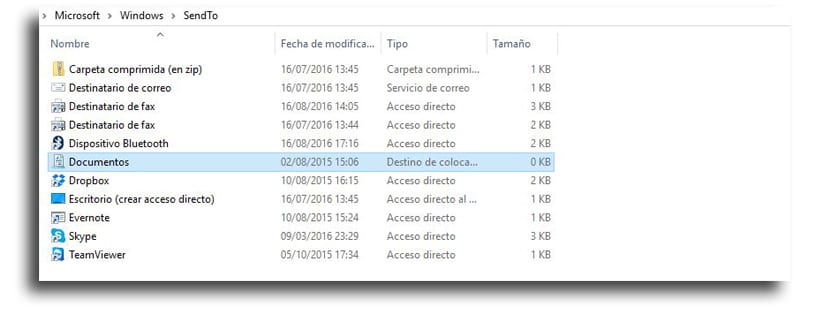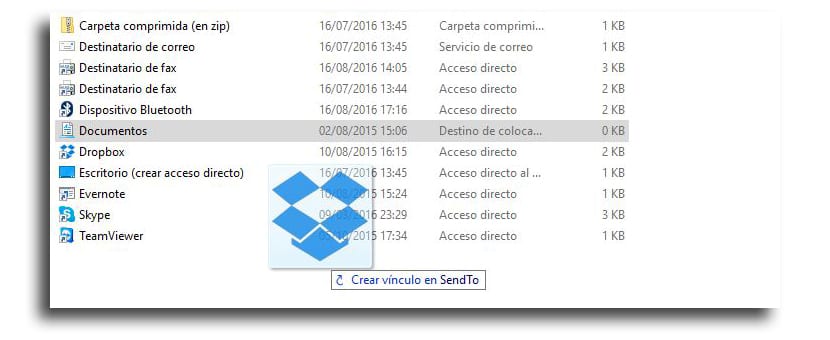
If you use Dropbox, Google Drive, or iCloud Drive to share and back up your files, you can add them to the context menu Windows quickly and easily.
We will show you below how to add those services to the context menu «Send to» in File Explorer, so that you can send files from your PC to any of your cloud accounts. We will use Dropbox, but the same procedure can be used with another service.
How to add Dropbox or other storage service to "Send To" in Windows
- We open the File Browser and we type or copy the following address in the File Explorer field and press enter:
% APPDATA% \ Microsoft \ Windows \ SendTo

- To add Dropbox to "Send to ..." you will need to have installed desktop client from Dropbox on your PC. Once you have it installed you should see the Dropbox sync folder in File Explorer
- Go to left panel where you will see Dropbox, and right click and hold to take Dropbox to the "SendTo" folder

- When release the right mouse button, you will see the options to move, copy or create a shortcut
- Let create a shortcut, so select "Create Shortcut" from the popup menu
- Now we must change the name of the shortcut file and press the F2 key. Change the name and hit enter
You can add Google Drive, OneDrive, and iCloud Drive to the SendTo folder in the same way, if for whatever reason they weren't already present. If you have other folders synced for other types of services, you can do the same to have them there.
Now when you right-click on a file or folder, you'll have the option to send it to your Dropbox, Google Drive, OneDrive, or iCloud Drive folder. You also have the option of add a Dropbox folder specifically to send the file directly there.